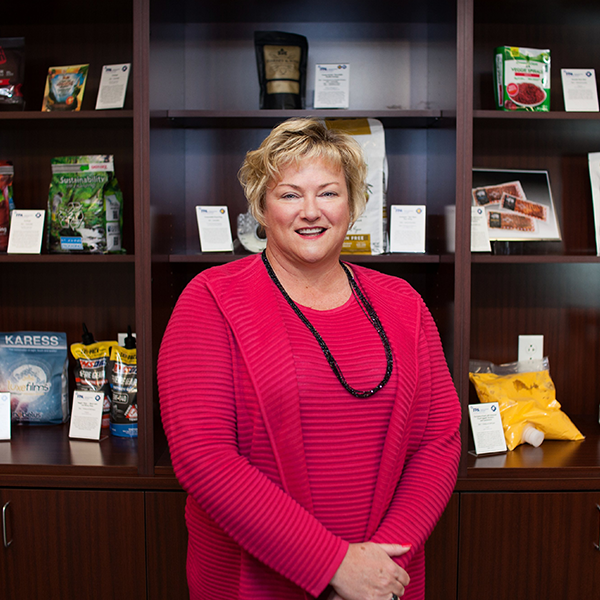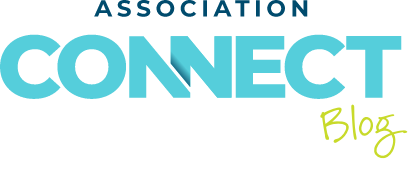Ways Women Lead: Highlighting Association Lead-HER-ship

Women’s History Month has been observed annually in March in the United States since 1987 to celebrate women’s contributions to history, culture, and society. As a company with decades of experience in the association space delivering marketing, communications, media sales, and event solutions, YGS Association Solutions is proud to honor and highlight the leadership styles of some female leaders advancing association success.
Motivation From Women at the Helm

Executive Director, Association of Technology Leaders in Independent Schools
My leadership style is informed by what I observed—both good and bad—from leaders who came before me. In some cases, I try to take healthy, responsive leadership approaches and apply my own perspectives to amplify them. In other cases, I actively resist any sloppy, selfish habits I observed from leadership styles I consider unhealthy and demeaning.
What this means in practice is that I am the type of leader who never asks others to do tasks that I wouldn’t do myself. Even if it doesn’t make sense for me to handle a particular task as the executive director, I lead in a way that instills in my team the confidence that I would do it myself—or that I have done it myself at some point in my career. I’m not above taking out the trash or executing small tasks; it all needs to get done and even the smallest deliverables can help an association meet its mission and serve its members.
Like many working mothers, I had a tough path to walk, particularly early in my career. I worried about losing my job if I had to take maternity leave, and I stressed to an unhealthy degree about how we would pay our family’s bills when my paychecks stopped flowing during those maternity leaves. I couldn’t understand how people managed to start families when the person taking time off was also the primary breadwinner. I cobbled together a solution, sustaining a few bloody knuckles and scraped knees along the way, in order to have my two biological children (we later adopted two more), and I promised myself—once again—if I was ever in charge, I would do better. That’s why my association has a liberal parental leave program, even though we are small enough that it’s not required by law.
In order for leaders to catch up with today’s workplace, we must start managing to projects and not to a certain number of hours in a day. I shifted my philosophy for supervision and oversight to a project-based style years ago, and I continue to work on my ability to inspire appropriate progress on projects without clocking hours or watching for green “active” bubbles on our staff messaging platform. It’s not always easy as a leader, but I have learned that it’s worth it. Our project-based focus at ATLIS has allowed us to implement unlimited PTO and four-day work weeks. Not watching the clock allows my team to juggle the demands of life and still gives them an opportunity to prove their value to the association for which they work.
The kind of leadership I work to refine and demonstrate as my career unfolds is a flexible, humanistic one that always puts our association first—but with flexibility and compassion for those who work for it. I lead by getting great people on my team, empowering them to do great work, and holding them to a high standard. This can be done without being unkind or ignoring the needs of the people who work with me. In short, I try to be the kind of leader every day that I wish I had had earlier in my career.
Christina Lewellen
Executive Director, Association of Technology Leaders in Independent Schools

President and CEO, Flexible Packaging Association
I like to lead by example. My door is always open, and I know there are no dumb questions, as I still ask a lot! But I do not like to micromanage. I like to see my team do it their own way—my way may not be the best way—as long as the job gets done right. I would prefer my team learn by example but follow their own instincts in how to accomplish the tasks at hand.
Alison Keane, Esq., IOM, CAE
President and CEO, Flexible Packaging Association

Vice President, Strategic Communications, Greater Capital Area Association of REALTORS®
I lead with empathy and humor. Mistakes happen! But when they do, we need to learn from them—then, keep moving forward. And it’s okay to laugh and have moments of levity while you’re at work.
I also focus on mentoring and building strong alliances, both inside and outside my association. To be a good leader, you’ve got to network, surround yourself with smart people, and develop solid, mutually beneficial relationships.
Christine Barnhart
Vice President, Strategic Communications, Greater Capital Area Association of REALTORS®

Associate Executive Director, Communications, and Editor-in-Chief, Principal magazine, National Association of Elementary School Principals
When working with a team, I like to set people up for success. That can mean providing tools and resources or just removing obstacles. But the most important thing is asking the crucial question, ‘What do you need?’ and then listening and acting on their responses.
Kaylen Tucker, Ph.D.
Associate Executive Director, Communications, and Editor-in-Chief, Principal magazine, National Association of Elementary School Principals

Executive Editor, Publications, and Editor in Chief, REALTOR® Magazine, Creative and Content Strategy, National Association of REALTORS®
I recently came to terms with the fact that I’m more of a content person than a process person; that is, I can create magazine content but I’m not great at documenting what I did or following a timeline.
For me, leadership is about having a vision and a path—and bringing the right people along on the journey. It may be something I choose to pursue or something I’m called on to do as a parent or in my work. In moments when I’m about to lead a new project, I need to start with some quiet time to think through questions such as:
- What are we trying to achieve?
- Who needs to be involved?
- Who needs to be consulted?
- What resources will we need?
- How long will it take?
- What will success look like?
Writing everything down is essential, as is talking through the vision and path with those on my team. Team members always bring ideas and solutions I haven’t thought of on my own.
In the midst of a project, I aim to provide regular feedback and to be there when team members need to talk through challenges.
When the team achieves a major goal, I think it’s essential to celebrate and to publicly acknowledge teammates’ contributions. In-person celebrations aren’t always possible since teammates often work remotely these days; in those cases, I at least aim to express sincere gratitude for a job well done!
Stacey Moncrieff
Executive Editor, Publications, and Editor in Chief, REALTOR® Magazine, Creative and Content Strategy, National Association of REALTORS®
It All Starts With Empowerment
According to Forbes, research shows that companies with more women on their boards outperform those without by a significant margin, and organizations with greater gender diversity among senior leaders are more profitable.
Women as leaders and decision-makers at all levels are critical to advancing gender justice and gender equality—and to furthering social, economic, and organizational success. The Pew Research Center reveals the pipeline for female leaders seems to be widening, as women have made significant gains in educational attainment in recent decades that better positions them for not only career success but also for leadership positions. That said, many barriers to women in leadership remain, including stereotypes, discrimination, lack of networking opportunities, and absence of work-life balance.
The association world is full of strong women who’ve shown up, done the work, and inspired us all. We hope this article provides insight into how female association leaders are influencing others and producing productive and effective work environments. Clearly, the methods and approaches that define female leadership styles favor what associations—and the world—need today. It’s not just good for women—it’s good for business.
Have an idea for an article? Let us know!
Receive the Association Connect newsletter
A proud company of The YGS Group | HQ: 3650 W. Market St., York, PA 17404
- Privacy
- YGS Association Solutions © 2025

